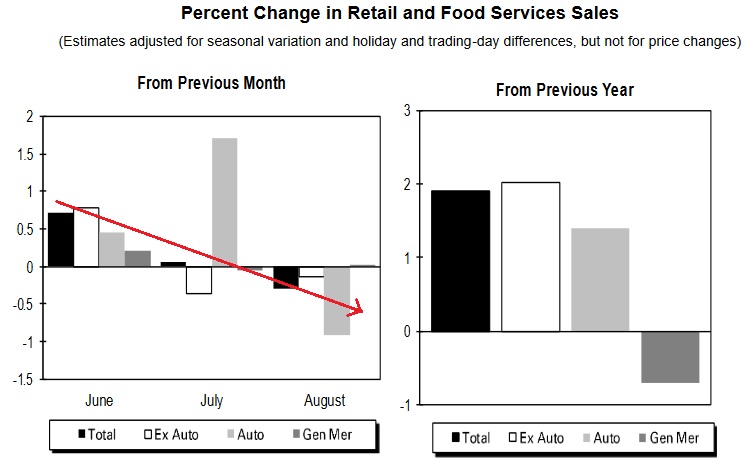Predicting the Future
The Steak House Update 9/21/16
September 21, 2016The Steak House Index (SHI) Update – 9/28/16
September 28, 2016I came across a worthwhile TED talk over the weekend. At the end of the talk, the speaker quoted Niels Bhor, a Danish physicist who received a Nobel Prize in Physics about 100 years ago: “Prediction is very difficult, especially if it’s about the future.”
So true. 🙂
You have to love a physicist with a sense of humor!
Here’s the TED talk. If you have a spare 18 minutes, I recommend a view: https://www.youtube.com/watch?v=Y0WaRIQWhv4
Why you Should Care: We’ve discussed the Nowcast before. The TED speaker and I agree: While the model is far from perfect, it has a few things going for it:
- It’s automated. A computer algorithm crunches the data, not humans. No, I have nothing against humans – some of my best friends are humans! – I simply believe a computer does a better job of analyzing this quantity of data.
- The methodology is consistent. I’m a big believer in this approach.
- Comparing actual results to forecasts, over time, the algorithm can be tweaked and perfected.
- We – the humans – can still interpret the data, if and as we wish.
Taking Action: Pay attention to the Nowcast reports. Here’s another link to the NY FED nowcast release. Subscribe. It’s worth the few minutes each week.
https://www.newyorkfed.org/research/policy/nowcast
The BLOG: It may be tough, but predicting is what we do here. So let’s get at it.
Fortunately, we have a few good tools . For example, as I discussed in my blog entitled “The Physics of Economics, Part 1”, we have market inertia. The longer conditions and/or expectations remain in a given state, the longer it will take for those conditions or expectations to morph Here’s that original blog:
The Physics of Economics – Part 1
Once again, let’s get an update from the “University of Michigan, Survey of Consumers” on inflation expectations:
Consumer inflation expectations are moving lower. This is important: Historically, inflation expectations (high or low) have proven to be self-fulfilling. The longer the expectations have been in place, the more durable that expectation becomes. Said another way, current low inflation creates drives current low future inflation expectations, which, in turn, results in actual low inflation. And the opposite is true as well. (Remember the 1970’s and 1980’s). Sure, inflation market mechanics are a bit more complex than that, but the inertia of this situation will work against any market forces attempting to change the paradigm.
As said above, consumer expectation is one important tool for economic forecasting. For both future interest rates (whether FED driven or market driven) and GDP. The most recent Nowcast from the NY FED reflects precisely this fact: Late in August, the Nowcast was fairly bullish for both Q3 and Q4, 2016. But in the past 6 weeks, forecasted GDP growth has decelerated. Take a look:
Right now, the algorithm is forecasting 2.3% GDP growth in Q3: 2016. Down significantly from 6 weeks ago. And for Q4:
…the forecast is now 1.2% GDP growth.
The lower trajectory is primarily related to recent weakness in manufacturing, retail sales and consumption. Take a look at this chart from a US Census Bureau economic release on 9/15 entitled, “ADVANCE MONTHLY SALES FOR RETAIL AND FOOD SERVICES“:
It’s easy to see the 3-month trend (red arrow).
Here’s the entire release:
https://www.census.gov/retail/marts/www/marts_current.pdf
Let me summarize. 3-months does not make a long-term trend. On the other hand, ‘inflation expections’ at 3% and below since 2007 do make a long-term trend.
Volatility and vacillation are to be expected when the US economy is not firing on all 8-cylinders. And it’s this fact that will keep the actual GDP growth – for now – at these lower levels.
The Nowcast supports the fact that our economy is performing lukewarm at best. I suspect we’ll continue to see more of the same in months to come. And I expect current “inflation expectations” will continue to anchor actual inflation, also, at lower levels.
- Terry Liebman







